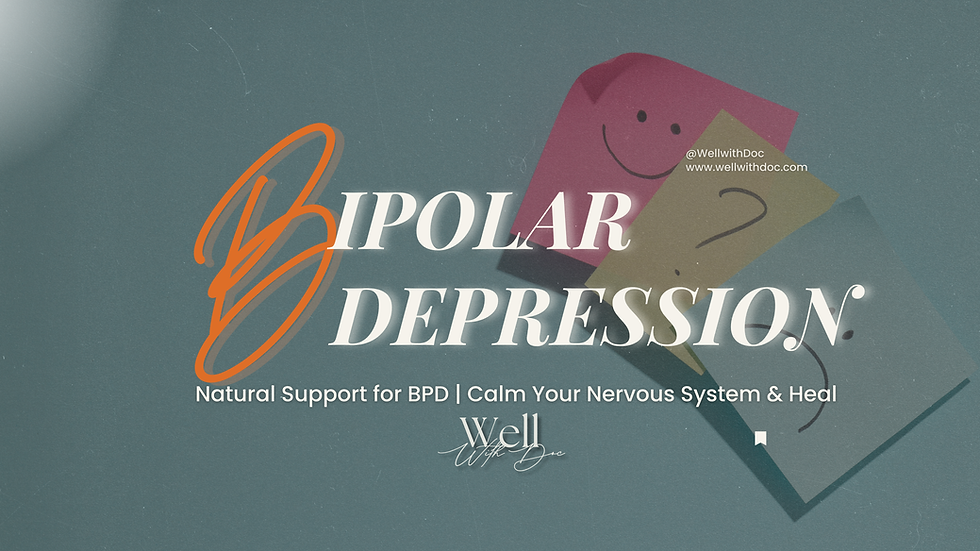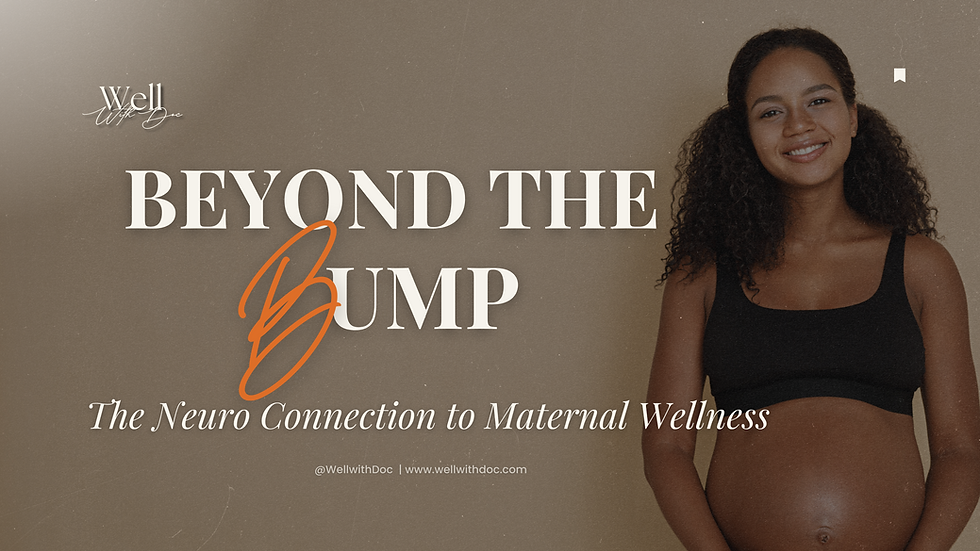Fluoride-Free Toothpaste Alternatives | Why Nano-Hydroxyapatite Is the New Gold Standard for Stronger, Healthier Teeth
- Doc

- Apr 27
- 4 min read
Written by: Doc, Dr. Aschia Florvilus Rodby | Published on: April 27, 2025
Growing up, many of us heard the same advice:"Brush twice a day with fluoride toothpaste, and you'll be set."
And for a while, that worked, but as we’ve learned more about how the body heals, detoxifies, and maintains itself, we're starting to ask better questions.
Not from a place of fear, from a place of understanding. From a place of wanting to work with our bodies, not just manage symptoms.
That's where nano-hydroxyapatite (n-HAp) steps into the conversation—with real science, real results, and a real opportunity to rethink what oral health can look like.
Why Some People Are Rethinking Fluoride
Concerns About Cumulative Exposure
Fluoride definitely has its place—it helps make enamel stronger and more resistant to cavities. But here’s the thing: when you’re exposed to it every single day—through water, toothpaste, mouthwash—the buildup over time can start to cause problems. Too much fluoride has been linked to dental fluorosis (those chalky white or brown spots on teeth), skeletal fluorosis (stiff, achy joints), and even possible effects on the thyroid and developing nervous systems [1,2].

One big study in JAMA Pediatrics even found that higher fluoride exposure during pregnancy was linked to lower IQ scores in kids [3]. It’s definitely making a lot of people pause and ask: how much is too much?
Toxicity Risks Are Real, and Isn't Fluoride... a Drug?
Yep. It’s easy to forget, but fluoride is classified as a drug. Like any drug, too much isn’t a good thing. Swallowing even small amounts, especially for little kids, can cause toxicity. This is why toothpaste tubes come with those “seek medical help if swallowed” warnings. (Seriously, check your label next time.)
A Bigger Shift Toward Holistic Health
If you’re someone who’s into clean eating, filtered water, or ditching unnecessary chemicals, it makes sense to start thinking about everything you put into your body... including what you brush your teeth with every morning and night. More and more people are swapping traditional fluoride toothpaste for options that fit better with their low-toxin lifestyles. It’s not just about cavities anymore—it’s about whole-body health.
Protection Still Matters | What Makes Nano-Hydroxyapatite Toothpaste Different
The goal was never to abandon enamel protection. It’s to find better, safer, smarter ways to support it. Nano-hydroxyapatite offers exactly that.
Nano-hydroxyapatite (n-HAp) is a lab-grown form of the exact same material your teeth are made of—hydroxyapatite. It mimics your natural enamel structure down to the microscopic level, allowing it to fill in tiny cracks, reinforce weak spots, and strengthen teeth without introducing anything foreign to the body [4].
In other words: Instead of just coating your teeth like fluoride does, n-HAp actively rebuilds them.
What The Research Shows
A 2020 systematic review found nano-hydroxyapatite to be just as effective as fluoride in preventing dental cavities [5].
A 2021 study demonstrated that n-HAp outperformed fluoride for treating dentin hypersensitivity, thanks to its ability to physically reseal exposed tooth surfaces [6].
A 2022 clinical trial even noted a visible whitening effect with regular n-HAp use, without any harsh bleaching agents [7].
Bottom line: Nano-hydroxyapatite doesn’t just protect, it restores.
A Quick Comparison
Fluoride Toothpaste | Nano-Hydroxyapatite Toothpaste | |
Main Action | Hardens enamel surfaces | Rebuilds and repairs enamel |
Source | Synthetic chemical | Biomimetic (body-identical mineral) |
Overexposure Risk | Yes, potential toxicity | No known toxicity at normal use |
Sensitivity Help | Mild | Strong (reseals open tubules) |
Whitening Effect | No intrinsic whitening | Yes, due to surface smoothing |
Safe for Young Children | Requires strict supervision | Safe even if swallowed |
Who Should Consider Going Fluoride-Free?
Switching to nano-hydroxyapatite could be a smart move if you:
Are living a low-toxin lifestyle
Want strong cavity prevention without fluoride risks
Experience tooth sensitivity
Are looking for safer options for children or during pregnancy
Simply want to give your body materials it recognizes and can actually use
It's not about demonizing fluoride. It's about knowing you have options—and that science has advanced far enough to offer better ones.
Pro Tips for Making the Switch

Be consistent: Brushing twice daily is still key for remineralization.
Choose quality formulas: Look for toothpaste free from SLS, artificial dyes, and unnecessary additives.
Be patient: Just like healing a bone takes time, remineralizing enamel is a gradual process. Give it 2–6 weeks to notice bigger changes.
A Better Way to Care for Your Smile

Your body is designed for resilience. It knows how to heal. It knows how to protect you ...when you give it the right support.
Choosing a toothpaste with nano-hydroxyapatite is a small daily act of working with your biology, not against it.
And small acts, repeated every day, are how real health is built.
Ready to upgrade your smile the natural way? Tap the button below to see Doc's favorite recommendation and what she uses every day. It's the reason dental visits are a breeze!
References
Peckham S, Awofeso N. Water fluoridation: a critical review of the physiological effects of ingested fluoride as a public health intervention. Sci World J. 2014;2014:293019.
Grandjean P. Developmental fluoride neurotoxicity: an updated review. Environ Health. 2019;18(1):110.
Green R, Lanphear B, Hornung R, et al. Association Between Maternal Fluoride Exposure During Pregnancy and IQ Scores in Offspring in Canada. JAMA Pediatr. 2019;173(10):940-948. doi:10.1001/jamapediatrics.2019.1729
Huang S, Gao S, Cheng L, Yu H. Remineralization potential of nano-hydroxyapatite on initial enamel lesions: an in vitro study. Caries Res. 2011;45(5):460-468.
Juntavee A, Juntavee N, Hirunmoon P. Remineralization Potential of Nanohydroxyapatite Toothpaste Compared with Tricalcium Phosphate and Fluoride Toothpaste on Artificial Carious Lesions. Int J Dent. 2021;2021:5588832. Published 2021 Mar 20.
Amaechi BT, Lemke KC, Saha S, Luong MN, Gelfond J. Clinical efficacy of nanohydroxyapatite-containing toothpaste at relieving dentin hypersensitivity: an 8 weeks randomized control trial. BDJ Open. 2021;7(1):23. Published 2021 Jun 25.
Daas, Issa, et al. “Comparison between Fluoride and Nano-Hydroxyapatite in Remineralizing Initial Enamel Lesion: An in Vitro Study.” The Journal of Contemporary Dental Practice, vol. 19, no. 3, 2018, pp. 306–312.




Comments